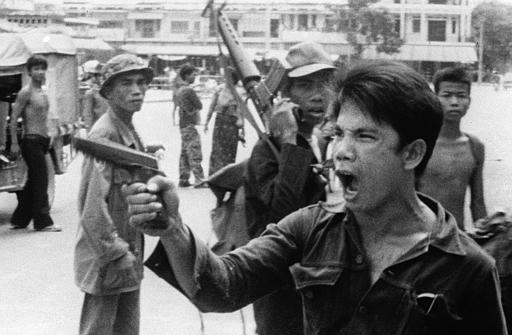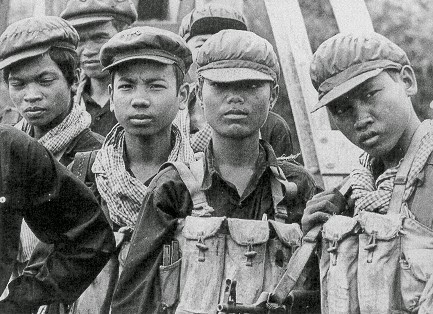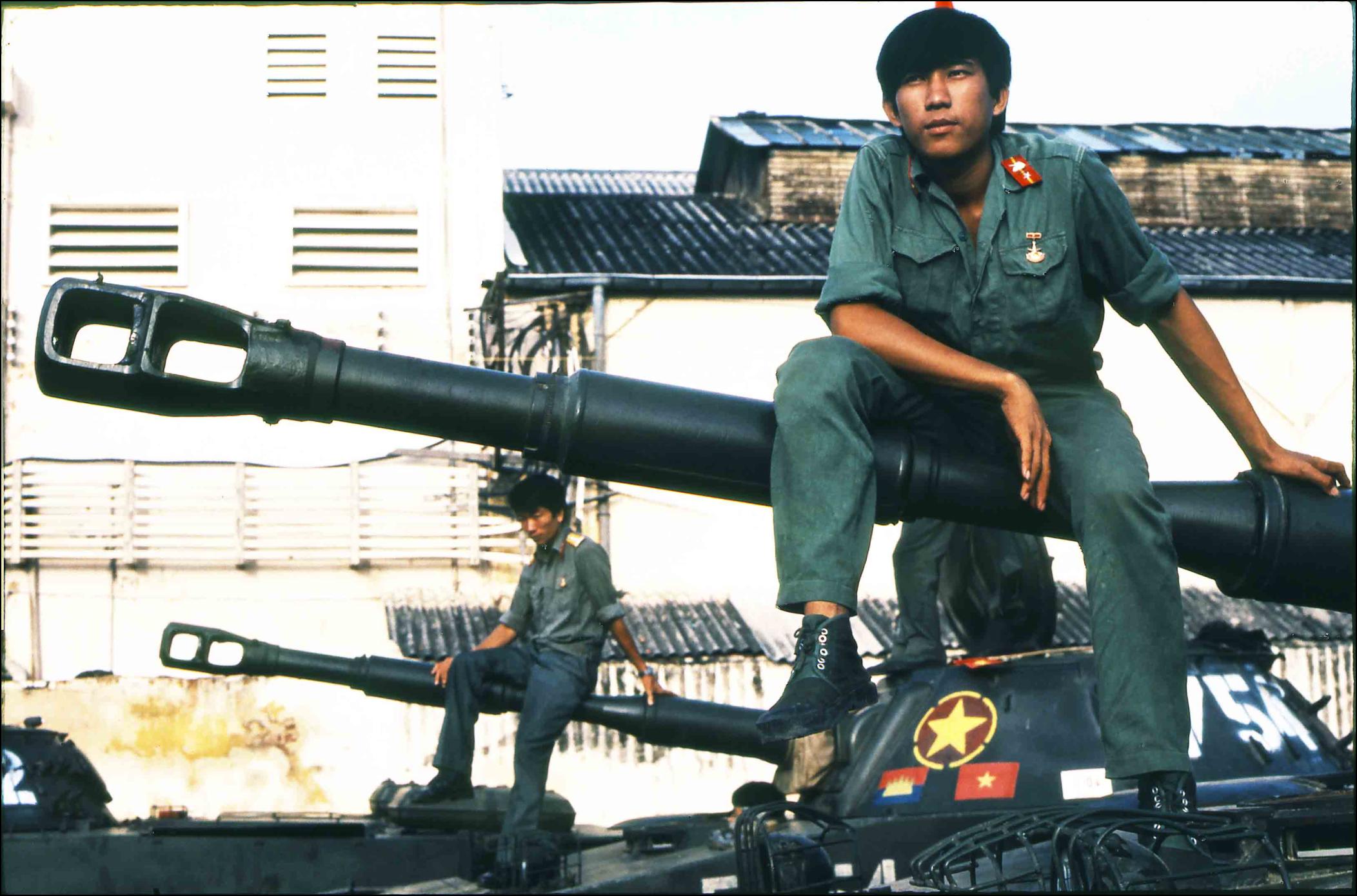The Dark Side of Cambodian History
Two of the must see spots in Phnom Penh are the Killing Fields and S-21. The Killing Fields are a short ride outside of town, one of the many sites around the country where countless Cambodians were executed at the hands of the Khmer Rogue. S-21 is an infamous prison in the city. Many of its inmates made it to the Killing Fields; only a handful made it out alive.
Most Americans don't know the story of what happened in Cambodia under the Khmer Rogue. Many don't even know who the Khmer Rogue were. I could just post a link to Wikipedia but I feel like putting up some info that I have picked up through visiting sites and reading on my own.
During the Vietnam War North Vietnamese troops used both Lao and Cambodian soil to transport weapons, supplies, and soldiers to the front lines. In response the US decided to bomb the shit out of Laos and Cambodia. I mean that - this gives you a better idea of just how much:
The United States dropped upwards of 2.7 million tons of bombs on Cambodia, exceeding the amount it had dropped on Japan during WWII (including Hiroshima and Nagasaki) by almost a million tons. During this time, about 30 per cent of the country's population was internally displaced (http://rabble.ca/toolkit/on-this-day/us-secret-bombing-cambodia).
 |
| Nixon explains the strategic importance of Cambodia |
 |
| the Vietcong used southern Laos and eastern Cambodia to ship supplies and troops to the front in South Vietnam |
Needless to say all the bombing destabilized the already fragile country and fueled the Communist insurgency battling pro-government forces (Communist forces also took over Laos in 1975).
The Cambodian government was backed by the US, which set billions in weapons and aid (and that is billions in early 1970s dollars). Much of that aid was squandered by the corrupt government officials. Cambodian generals even sold the weapons to the Khmer Rogue! From 1973-75 the tide slowly turned in favor of the insurgents, while in Vietnam the US was also losing ground to the Vietcong.
 |
| While the pro-US government troops lacked motivation, the Khmer Rouge fought with a sense of purpose |
As the rainy season approached in the spring of 1975 the Khmer Rouge began steadily advancing toward the capital, Phnom Penh. Refugees streamed into the city from the countryside. Just before its fall the population of Phnom Penh had swollen to an estimated 2.5 million people. The rains that would bog down the Khmer advance failed to arrive quickly enough, and on April 17, 1975 they paraded through the streets triumphantly, the new masters of Cambodia.
Within 3 days the Khmer Rogue had nearly emptied the entire city. All across the country cities were evacuated and their populations relocated to the countryside. Residents were told that it was a precautionary measure because the US would bomb the cities; they could all return home in a few days.
Sadly that was not to be the case. The Khmer Rogue, led by Saloth Sar, aka Pol Pot, were determined to create a completely agrarian and equal society. Every citizen was to work the land and live in small village communities. As this was a new beginning for Cambodia, 1975 was to be known as year zero. Because the elites and intellectuals were responsible for the sad state of the country, they were to be eliminated. If you were a government official, then you were to be killed. A teacher - dead. Wore glasses - dead. Spoke multiple languages, studied at a university, or held a white collar job - dead. Some managed to lie about their profession and/or upbringing, but few were spared.
 |
| Pol Pot |
 |
| the Khmer Rouge employed poor, young farmers - very impressionable and easy to control |
Not only were the city dwellers poor farmers - they (like everyone else outside of the party ranks) received meager rations for their slave-like labor. They managed to produce enough rice to feed the entire population. But instead of rewarding the people for their hard work, the food was sent to China in exchange for weapons.
Countless died from overwork, starvation, or execution at the hands of the Khmer Rogue. Pol Pot grew increasingly suspect and paranoid towards the end of his reign, and not only laborers were affected. Thousands in his own party were accused of treason and killed. Many made false confessions - after days of torture of course.
In the last paragraph I used the word countless, and not just because I meant a large number. We still don't know how many perished during less than 4 years of Khmer rule. Estimates range from 1.5 to over 3 million people - out of a total population of less than 9 million.
In the end it was the Vietnamese who brought an end to the Khmer Rogue. Annoyed by cross border attacks into Vietnamese territory, they invaded Cambodia and drove the Khmer Rogue from the capital in 1979.
 |
| The Vietnamese invaded and quickly drove the Khmer Rouge from Phnom Penh, occupying much of the country until they withdrew 10 years later, although Pol Pot's forces were still at large in the jungle |
That was not the end of the story however. Many of the senior leaders escaped to the jungles of the northwest where they went into hiding. But it wasn't just an isolated existence. For several years after the Vietnamese invasion the Khmer Rouge were still the official leaders of Cambodia, representing the country at the UN. China and even the US backed them because they had mutual enemies - the Vietnamese Communists.
Khmer Rouge forces, including Pol Pot and several senior leaders, remained at large well into the 1990s. Pol Pot was placed under house arrest by his own men in 1997. He died a year later of natural causes, never to be held accountable for his actions or even to admit that he did anything wrong.
 |
| the unassuming grave of the former Khmer Rouge leader |
That same year the remaining Khmer Rouge holdouts surrendered to the government. Many were given amnesty and never prosecuted. A select few of the leadership has finally stood trial under a joint UN-Cambodian court, some 30 years after the Khmer Rogue's rein of terror had largely ended.
Not surprisingly the legacy of the Khmer Rogue still lingers in Cambodian society today. The current prime minister was a member during the takeover in 1975 but fled to Vietnam where he became a resistance fighter. Many members of government were involved with the Khmer Rogue in some way but were never questioned over their role or actions during the 1975-79 period.
 |
| Hun Sen, current prime minister of Cambodia |
 |
| several surviving top Khmer Rouge leaders have been put on trial recently |
 |
| Many land mines still dot the Cambodian countryside, and there are an estimated 40,000 amputees nationwide. Even today several Cambodians are mamed by unexploded ordnance every week |
As time passes hopefully the still fresh wounds from those awful years can begin to heal, but that process is progressing slowly. The trial of several former Khmer Rouge leaders was a good start, but many Cambodians would prefer to simply forget those times instead of come to terms with them. It is hard to blame them - maybe the country will never really get over the Khmer Rouge legacy. As the memorial at the killing fields says, we remember so that this sort of thing will never happen again. Of course that was said after the Holocaust as well, but to little avail. Let's hope things could be different this time round.


Comments